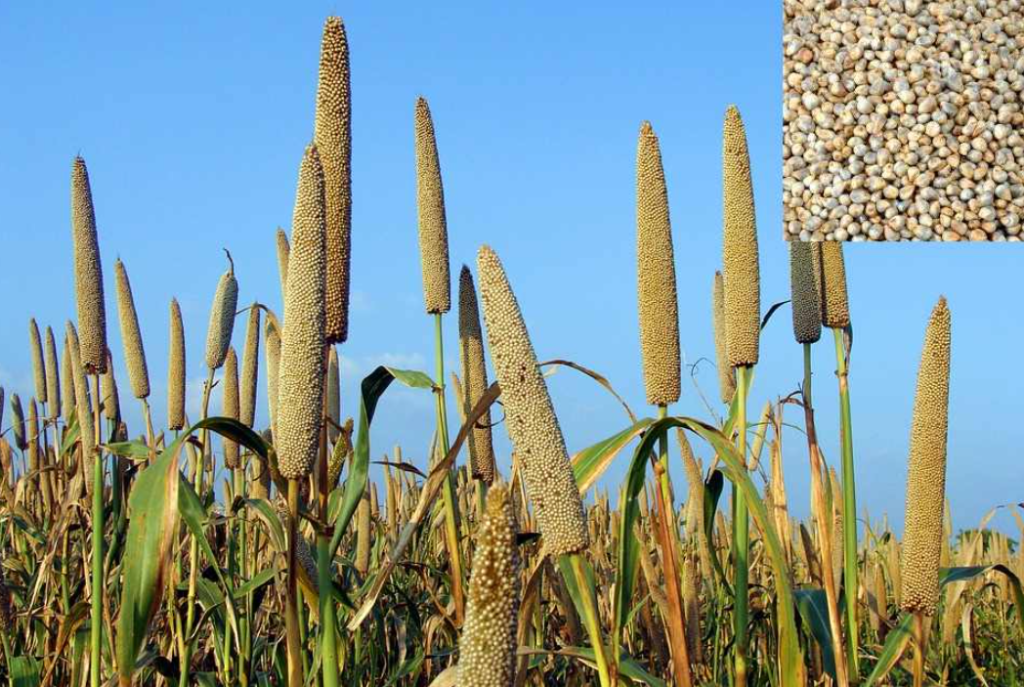Pearl millet, locally referred to as Bajra, is one of the most important crops in India. It enjoys growth in arid and semi-arid areas, and hence, many farmers consider it as their flagship crop. Bajra is a source of nutrients such as protein, fiber, and some mineral nutrients.
Bajra uses little water and, most preferably, sand loam type of soil with low nutrient holding capacities. Rajasthan, Gujarat, Maharashtra, Uttar Pradesh, and Haryana are the major states where it is mostly grown.
Let’s learn more about bajra farming in India and the methods and techniques used to increase the yield.
Cultivation Process
For optimal yield of Bajra, there are some tips and methods to consider. Let’s learn more about it in detail :
Soil Preparation
Soil preparation is the most important part of the cultivation process for optimal growth. Bajra plants prefer the most suitable and well-drained, sandy loam-type soils. The first tillage begins with cultivating the field 2-3 times, sweeping the soil to about 15-20 cm deep. Make sure the given soil is as free from weeds and chaff as it can be. Cultivation, which involves the use of a tractor, is another efficient way of preparing the soil. It can be done neatly and efficiently with the help of a Mahindra tractor, which offers a powerful engine and comes with versatile features.
Seed Selection and Sowing
Selecting appropriate seeds from appropriate seed sources is important for the growth of the crop. It is recommended to buy certified seeds from a reputable seed producer. Some of the well-known types of bajra are HB-1, RHB-30, and Pusa-23. Before planting, drill fertilizer, use fungicides and control the seeds against soil-borne diseases.
Plant the seeds 2-3 cm deep and in a row ]45 cm. The best months for sowing the bajra crop are during the onset of monsoon season, which is from June to July. Another technique that will ensure even distribution and the right placement of the seeds on the ground is through the use of a tractor with a seed drill. Sowing can be made easier and more efficient by using modern-day implements.
Irrigation Management
Bajra consumes little water and thus is ideal for absorption in rain-fed regions. However, where any crop is under threat of water stress, timely irrigation can enhance yield, particularly during such growth phases. The first irrigation must be applied 3-4 weeks after planting, while the second is used at the flowering stage. However, experience has shown that when rainfall is adequate, further irrigation may become unnecessary.
Drip or sprinkler irrigation systems can be used in areas with water scarcity. It should be noted that these systems can be established easily and maintained effectively.
Weed Control
Some weeds interfere with bajra through competition for both nutrients and water, hence influencing the yields. Weed management is crucial, particularly during the crop’s initial development periods of 4-5 weeks. Weed control is important to ensure a good crop yield.
Harvesting
Bajra is harvested when the grains become hard and the leaves of the plant turn yellow. It is usually done 75-85 days after the sowing of seeds. It is possible to chop the crop using hand tools like sickles, or you may use a harvester if the field is large. Farmers prefer tractors with good hydraulic capacity to use harvesters along with them for smooth operations.
If you are looking for a good tractor, then check out John Deere Tractor. They offer amazing hydraulic capacity and a powerful engine that works efficiently on the field.
When it is time to harvest the crop, use a thresher to remove the grains from the husk. The grains must be dried properly to avert mould formation and spoilage. Ensure that the grains are kept under low temperatures with no contact with moisture in order to retain their quality.
Market Value of Bajra
India is the biggest consumer of Bajra, and its primary uses range from human consumption to fodder. Prices are variable and depend on characteristics such as yield, quality, and consumer demand. On average, the cost of bajra may vary from ₹20 to ₹25 per kilogram for one kilogram of the produced product. There is a growing demand for bajra flour and other products, which has even helped farmers gain better margins.
Government policies subsidising millet as a cash crop can go a long way in helping the farmers. It is also equally important to engage in contract farming or cooperative marketing to bargain for better prices.
Conclusion
Farming of Bajra is possible in various areas of India, including arid and semi-arid regions as well. Above are the practices that farmers can adopt in order to obtain good yields and, hence, increase their profitability. Because of the increasing awareness of a healthy diet among customers and their preference towards organic foods, bajra has a great market opportunity.




